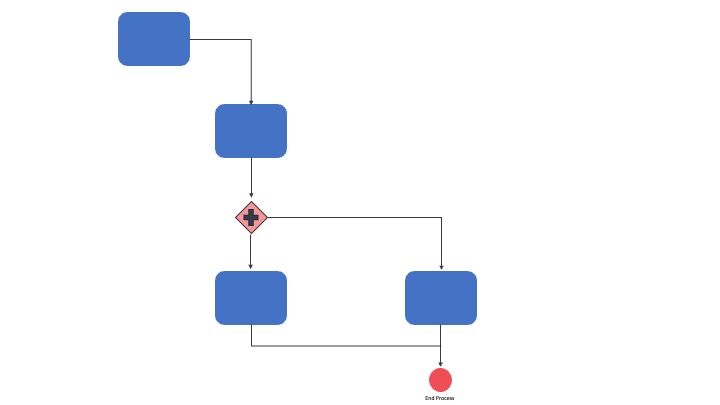Migrating from ECC to SAP S/4HANA is not just a technical shift; it’s an opportunity to reimagine business processes for better efficiency and agility. Adopting SAP DevOps enables organizations to enhance the quality and speed of managing SAP changes while reducing the risk to system stability and ensuring business processes align with business objectives.
Technical change management is essential for a digital transformation, transferring functionality to the modern systems as business capabilities are rolled out in the new environment. However, the actual value of the effort lies in the transformation of a business.
A better user experience (UX), increased productivity, and more efficient processes are characteristic of such a transformation
Chris Drake – CTO Rev-Trac
While a business transformation relies on human change enablement, an organization’s ability to handle business process changes is often overlooked.
In this blog, you will learn:
- How broken business processes can shackle an organization’s productivity and resources
- The role of testing in ensuring the stability of essential business processes
- How a unified SAP DevOps toolchain delivers change without harming business processes during an SAP S/4HANA migration
- Why governance and enforcement are critical for digital and business transformations
- How Rev-Trac Platinum enables unified SAP DevOps
Business Processes: the building blocks of SAP
Business processes are the backbone and the point of SAP systems. They determine how an organization achieves its objectives, resulting in transactional input and output. Some parts of the process are automated, and others require human engagement, either by a customer or a business representative engaging with the system.

A simple business process — transactional inputs and outputs
What happens if business processes break?
Broken business processes are costly, reduce productivity, take time to resolve, and can potentially halt operations.
- Orders and payments can’t be processed
- Resources cannot be acquired
- Production Lines stop
- Staff cannot be paid
However, in a constantly evolving landscape, technical adjustments are necessary to grow, improve organizational effectiveness, comply with government regulations, enhance security, and drive productivity.
But, all changes are risky as they impact critical business processes. That’s why it’s important to fine-tune your testing to ensure processes function correctly in the future despite the changes
Chris Drake – CTO Rev-Trac
Solve dilemma with the right SAP DevOps tools
User engagement and thorough testing are crucial to determine if a modified or re-imagined business process change still meets business objectives. Yet, it’s still risky. Test coverage has limitations, while changing interfaces and user experience can overwhelm key users before a go-live.
To overcome the challenge, organizations require the necessary tools to:
- Put controls on objects which have a critical impact on sensitive processes
- Understand when a technical change impacts a business process
- Limit impact on unnecessary technical areas and processes
- Focus testing on areas most heavily impacted
- Enable rapid reporting of problematic or limited production capability
- Allow rapid response and remediation from the technical and development teams
How SAP DevOps can help improve testing
A huge benefit of SAP DevOps is automating testing and deployment procedures by incorporating testing into a unified DevOps toolchain.
Testing can become outdated or ineffective as business processes change or are enhanced.
It must be constantly updated to guarantee the ongoing stability of critical business processes.
With the boom in SAP DevOps, recent initiatives have seen companies include a constant feedback loop into change delivery workflows. When implemented correctly, this should automate testing, allowing an organization to deliver change continuously without fear of harming business processes. In this scenario, testing is integrated into a unified SAP DevOps toolchain.
Create a unified DevOps toolchain with Rev-Tac Platinum
This is where Rev-Trac Platinum, the SAP DevOps Orchestration Platform, comes into play. Rev-Trac’s transport and change management workflow engine acts as the CI/CD for your SAP ABAP layer, taking control of change delivery.
At the same time, Rev-Trac integrates with top-tier ALM and DevOps solutions, allowing organizations to create a unified SAP DevOps toolchain. Rev-Trac is the centralized point of control for the unified DevOps toolchain, automating and orchestrating a low-risk approach to deliver on SAP DevOps initiatives.
It controls the progress of technical change and can gate the change based on testing. More importantly, Rev-Trac Platinum can prevent a change from progressing if there is not a suitable threshold of test coverage.
Streamline testing, enhance business agility
In a Business as Usual (BAU) environment, the following are essential and easy to maintain:
In Development:
- Immediately pause changes to critical objects and get additional approvals
- Enforce developer best practices
- Perform analysis of the business process impact
- Understand test coverage and improve if necessary
In Quality
- Execute the correct tests based on the result of the impact analysis
- Send defects and test failures back to development for remedy
- Engage key users to ensure that the process is functional and suitable for rollout to production users
Pre-Production
- Enable users to perform their jobs correctly once the digital and business transformation affects their workspace (See blog 1)
In Production
- Simplify issue reporting and provide constant user feedback.
In digital and business transformations, the challenge is that the approach to testing and the feedback loop needs more attention and emphasis as the organization is focused on improving and changing business processes.
SAP DevOps and business change processes
As processes change, test scripts need to be adjusted, and key users must understand their value and required inputs and outcomes. With change management as the underlying DevOps orchestration layer, there must be a flexible, configurable, and easy to adjust solution, allowing for rapid and enforceable adjustments when necessary.
In a unified DevOps toolchain, the process side of change encompasses creating the change, code scanning, identifying the change impact, determining stakeholders, developing a change plan, testing, implementation, and evaluation. Every change must be adequately defined, reviewed, and approved before implementation in line with your governance processes. You can use advanced change management solutions to integrate the functions into a single SAP DevOps platform.
What do you need to consider in an automated SAP DevOps workflow?
SAP DevOps areas that require constant maintenance to guarantee the capabilities of critical business processes as they change include:
- Code scanning – improves the quality of code in production.
You can configure the SAP ABAP Test Cockpit (ATC) and other best-of-breed code scanning tools to prevent harmful code from leaving ABAP environments. Run a scan whenever a transport is ready for release and prevent progression if high-risk conditions are found. Configure the ATC check variant to detect security vulnerabilities and wrong code, for example, problematic SELECT statements. Conduct scans ad hoc or for more comprehensive checks; full scans can be scheduled and evaluated to ensure your code is safe and measures up.
Many tools are available to integrate scanning into your change management process to enhance code quality.
- Identify the impact of changes – know what to test.
It is crucial to identify changes’ impact, whether it’s a BAU change or changes in a large implementation project like an SAP upgrade. Use an impact analysis tool to determine what is impacted and what is “most at-risk” and needs to be tested.
Sharing this information with key stakeholders significantly reduces testing requirements, allowing users to focus on the impacted areas, which is valuable in complex environments with many changes. With the appropriate tool, you can check what is changing in the SAP enhancements and determine the object/s most at risk before deploying the change.
Most Impact Analysis tools will do this by analyzing the performance history of production to see how critical the impact is and how often impacted object/s are executed. Object/s most at risk require testing before their implementation.
The best Impact Analysis tools can also analyze the test coverage available in the Test Automation toolsets to ensure appropriate automated coverage. This is also useful to future-proof regression testing and to maintain the ability to support process adjustments in real-time as part of the change delivery process.
A sophisticated impact analysis tool can compare business process impacts with test coverage, ensuring that tests are modified as processes change
Chris Drake – CTO Rev-Trac
- Update test scripts – revise testing to align with process change.
When business processes change, they must be tested. This requires a constant evolution of test scripts. At the same time, these must be communicated to business users.
With Rev-Trac Platinum, you can integrate modern testing solutions into a unified SAP DevOps toolchain using REST APIs.
Bottom Line: Automated SAP DevOps enables tracking changes to business processes
Business process change requires careful planning, testing, communication, stakeholder management, and approvals to ensure critical processes function correctly now and in the future. Handling change to business processes doesn’t have to be a nightmare.
Guarantee success with a unified SAP DevOps toolchain
Automating and integrating tools into a unified SAP DevOps toolchain guarantees that impacted business processes can be revised rapidly and cost-effectively as technical changes are introduced during an SAP S/4HANA migration. Using a tool like Rev-Trac Platinum, which automates deployments of ABAP and Cloud technologies while integrating third-party ALM and DevOps tools into highly flexible workflows, enables you to make quick changes that can be enforced when required.
The modifiable and flexible DevOps orchestration underpins the ability to manage process change.
Guaranteeing the capabilities of business processes as they change makes the software development lifecycle manageable and is the foundation of a successful digital and business transformation.
The key is to have an SAP DevOps process that can be easily updated and enhanced as business processes are adjusted to ensure a reliable automated approach to managing and progressing changes across an SAP landscape.
In the next post, “Preparing for a Digital Transformation: SAP S/4HANA Migration Steps,” I will discuss the prerequisites for a successful SAP S/4HANA migration and why transitioning is not a simple lift and shift.

